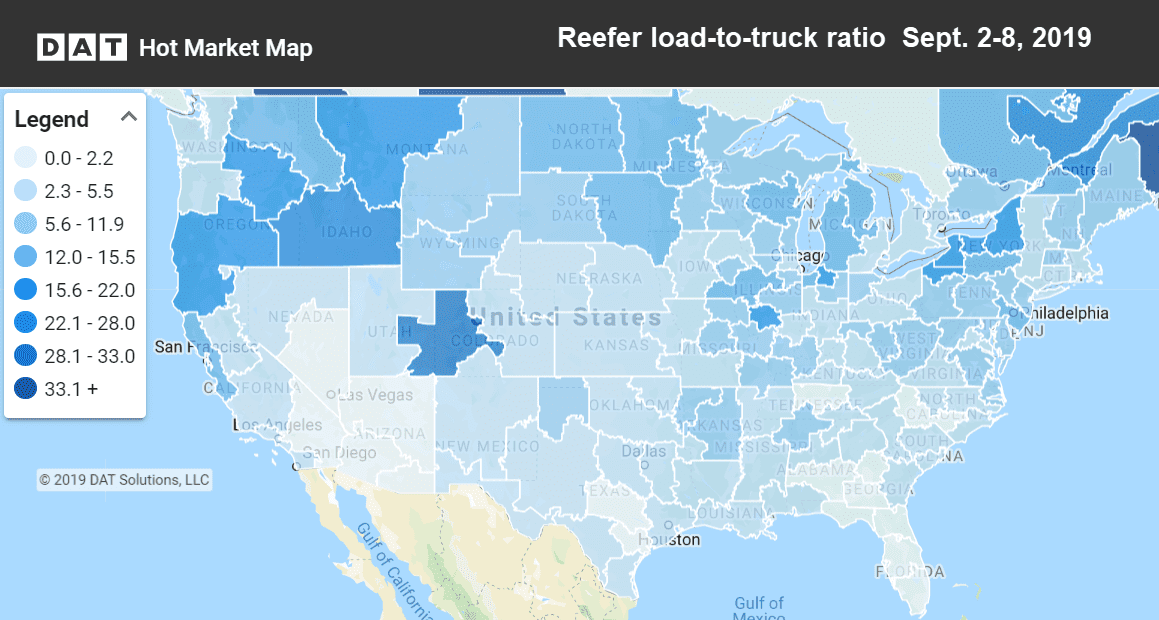National average reefer rates for September so far are above where they were in August. Part of that is because of apple harvest season, which has boosted demand for reefer trucks in the Pacific Northwest, Western Colorado and Western Michigan.
The arrival of Hurricane Dorian on the East Coast also rearranged supply chains, tightened capacity, and increased rates on many of the lanes in the path of the storm.

Hot Market Maps are available in the DAT Power load board and DAT RateView.
Rising markets and lanes
Last week the leading markets were Grand Rapids, Atlanta, and Elizabeth, NJ. Several other markets saw high levels of freight for a holiday-shortened week, including McAllen, TX; Chicago, and Stockton, CA.
The Stockton market – which includes Sacramento — saw strong volumes for both reefers and vans, and pushing rates higher in that market. Tree fruit and nuts are some of the products coming out of the Stockton market now. Apple harvests are in full swing in Michigan, and the Grand Rapids market saw some significant rate increases last week.
- Grand Rapids to Atlanta jumped 37¢ to $3.53/mi.
- Grand Rapids to Philadelphia increased 19¢ to $3.58/mi.
Here’s a lane that moved higher due to the approaching hurricane:
- Atlanta to Lakeland, FL added 21¢ to $3.27/mi.
And the highest paying lane came out of Elizabeth, NJ last week, as the hurricane turned north, threatening New England.
- Elizabeth, NJ to Boston surged 42¢ to $4.36/mi. That’s the highest weekly average rate we’ve seen for refrigerated freight — at least for long-haul freight moving more than 225 miles.
Falling markets and lanes
Fewer lanes were down last week, but here are a few examples.
- Dallas to Columbus, OH, slipped 18¢ to $1.57/mi. Trucks wanted to get into the Upper Midwest for the fall harvests.
- Lakeland, FL, to Atlanta fell to near an all-time low, dropping 14¢ to $1.23/mi.
RELATED: Hurricane disrupts supply chains, increases van rates


